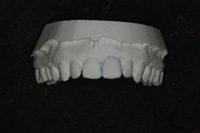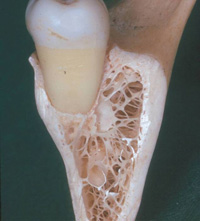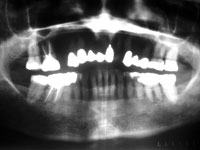 |
|---|
|
Figure 1. Orient the new employee to start producing. |
 |
| Figure 2. Monitor duties and responsibilities. |
 |
| Figure 3. Don’t turn your ear far from interoffice quarreling. |
 |
| Figure 4. Forms and checklists are highly effective. |
 |
| Figure 5. Know what your staff is doing. |
 |
| Figure 6. Know who’s carrying the load. |
 |
 |
| Figures 7a and 7b. Gain the space you need. |
In this final article in my 3-part series on building your dream practice, I will discuss some remaining steps that will help you achieve your goals.
HAVE A SYSTEM FOR STAFF PROCUREMENT AND JOB ORIENTATION
As positions in the office open up, we not only need to hire and orient new employees properly, but it is also of the utmost importance that we have a functional system to introduce them to. They need to be oriented to the entire office and their job and have an organized learning transition to get them fully productive in that job in the shortest amount of time. Someone needs to be assigned and responsible for helping the new person learn the systems (Figure 1). Not many dentists have anyone trained to do this. I cannot understate the importance of establishing this system, if for no other reason than to take away the stress of dealing with the change and to gain confidence and control. Therefore, we must have a system of staff procurement and job orientation.
PUT IN PLACE AN EFFECTIVE TRAINING SYSTEM
Mark Twain said, “Inherently, each one of us has the substance within to achieve whatever our goals and dreams define. What is missing from each of us is the training, education, knowledge, and insight to utilize what we already have.” Without training and having the proper ingredients in place, production will be stymied. For instance, you have a new scheduler on the job and the phone rings. She answers and the patient says, “I hate to call you and tell you this, but I can’t come in for my 2-hour bridge prep appointment this afternoon. I’ll have to call you back and reschedule.” The untrained scheduler says, “Okay, when should I call you back?” or some other inappropriate response, and the production is shot for the day. So, how do you feel on days like this when your production is low and your spouse needs new furniture, a car, or money to pay those big college tuition costs? I suspect your morale would be low, and if this low production is chronic, it can get pretty depressing.
SET UP SYSTEMS AND CHECKLISTS FOR MOVING THINGS THROUGH THE OFFICE
Physically routing things through the office is a constant necessity. So many things are going in and out of the office that it really eases the work load and decision-making when systems are set up to make this routing automatic. As an example, take the case of new patients. It is very important that they be taken care of by everyone in the office that deals with them and all aspects of their treatment and business. There are certain steps the receptionist takes when this patient walks into the office. Where do they go from there? What forms do they fill out? What office policies are they given? Who sees them next? How and where are finances addressed with them? How is the treatment plan presented to them? What do we do with them when the treatment is finished for that day?
DON’T IGNORE INTEROFFICE DISCORD
Discord among staff members is a major distraction when we are trying to keep our attention on doing dentistry. Oddly enough, all of these problems can be enumerated as c words: conflict, contention, clashing, combat, controversy, competitiveness, corivalry, and cut-throating.
TAKE ADVANTAGE OF THE EFFECTIVENESS OF FORMS
Do not underestimate the value of using forms and checklists. Their value in office use is evidenced by the great number of requests for them when we have had visitors and workshops in our office. They make life easier and safer. You would never see an airplane pilot skip his checklist before taking off. That’s because his life and the lives of his passengers depend on it. Checklists have been used by good businesses since the 1800s. If you want things done right in your office, you’ll use them too. The problem I see in most offices is that they have too few forms and checklists because it takes some creativity to make good ones. Any form or checklist is better than none at all. They do not have to be perfect and rarely are at the start.
THERE MUST BE A SYSTEM FOR MEASURING EVERYONE’S PERFORMANCE
Most dental offices keep track of their collections and production as a way of knowing if all the bills can be paid at the end of the month and how much they have left over to spend. These are important statistics, but it is the work not usually measured that makes production happen and gets the dollars collected. Patients have to be scheduled, and without someone making the calls to patients and skillfully scheduling their recalls and needed treatments, they wouldn’t be in the dental chair to get the dentistry delivered and paid for. This is why measuring the behind-the-scenes activities such as outgoing calls is so important. Keeping statistics is nothing new to successful businesses; it is new only to dentists. Measuring performance has been used throughout industry and businesses worldwide for decades.
PUT EMPHASIS ON THE PEOPLE PART OF YOUR PRACTICE
Knowing how to deal with the teeth and surrounding structures is challenging, but usually not as much as the people they are attached to. Recently I asked a new veterinarian how she was enjoying her practice. She said, “Not too well. The animals are fine. The problem is they are brought in by people.” We, like anybody else in the people business, had better get a grip on dealing with all kinds of people effectively because—to a large degree—our success or failure depends on it.
DON’T LET YOUR BUILDING LIMIT YOUR PRACTICE
Whether we purchase, build, rent, or lease an office space, do not let your building limit your practice. If you are in a practice and still would like to grow but are worried about the time, trouble, and exposure of moving or knocking out the walls, don’t give it a second thought. Just do it. I can tell you that bricks, pipe, and drywall should never limit what your heart desires. Initiate plans for office space to create your future practice the way you want it to be. If you have physical plant needs, don’t be afraid to address them. (Figures 7a and 7b).
BE DEVOTED TO THE ART AND SCIENCE OF DENTISTRY
There is no substitute for technical competence. If there are things in dentistry that you are not interested in doing, that is okay. There are others out there who do like those things. For those things that you most enjoy or are interested in doing, pursue excellence in those areas and do them to your heart’s desire. No one can be happy doing things they don’t want to do, but on the contrary, it can be exhilarating when we are challenged and pushed to our limits, even on difficult things that we enjoy doing. The better or more technically competent we become, the better it is.
MAKE AN ASSESSMENT OF YOUR PRACTICE
Take a look at your practice and be honest with yourself based on what I recommend here. You don’t have to share or discuss this with anybody. Just be honest with yourself. If you have these things covered, that is great. If it seems like an elephant you’re trying to eat, then start with one bite at a time.
Dr. Westerman has served extensively in his local and state dental associations and is a frequent contributor to dental journals and textbooks. He has taught at many dental association conventions, study groups, and management seminars in a variety of healthcare settings. He holds 5 patents in the dental field and is the author of the highly acclaimed Classic Practice Series literature on dental management. He is the founder of Classic Practice Resources, a dental practice management company that presents training and management seminars and workshops to thousands in the dental field. He can be reached at (225) 927-3442 or via e-mail to robertdwestermandds@cox.net. To contact Classic Practice Resources, call (800) 928-9289.










